Chilean Harvest Update
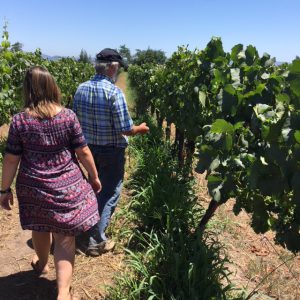
Viticulture:
Chile’s wine growing success is due to the cooling influences they receive from the Pacific Ocean, the Andes Mountains, and the warm and plentiful sunshine. Their warm Mediterranean climate allows for grapes to fully ripen and avoid fungal diseases. There is a current called the Humboldt Current that flows up from Antarctica, along the Chilean coast, and the cool air is pushed inland by the wind patterns. This cooling effect helps cool off the grapes during those sunny days. Colchagua and Curico Valley both benefit from this ocean influence; which allows these regions to produce grapes from fertile soil for wines that are gaining premium reputations.
Making Chilean Wine:
Cabernet Sauvignon is the most widely planted grape in Chile. Cabernets from this region of the world boast full bodied, ripe black fruit aromas and flavors, and some herbaceous characteristics. If you are a winemaker who does not enjoy herbaceous notes, we suggest using the CSM yeast on all of your Chilean reds. This yeast was specifically cultivated to help offset herbaceous notes. Merlots from Chile tend to be medium bodied, fruit forward, and depending on your winemaking style, can produce some very complex characteristics. Carmenere from Chile (known as the main grape of the country) showcase high levels of tannins, black fruits, and some herbaceous notes depending on the winemaking style. Another grape I would like to point out is Syrah from Chile. Syrah is widely planted across the region and displays notes of black fruit, and is full bodied, with great intensity. If you have tried Syrah from South Africa in the past it might be interesting to try Syrah from Chile and compare and contrast, or even blend them both together!
This season we will have Cabernet Sauvignon, Merlot, Carmenere, Malbec, Cabernet Franc, Petite Verdot and Pinot Noir grapes and juices from Chile.
White wines from Chile are also delicious. The most widely planted white grapes are Sauvignon Blanc and Chardonnay. We are lucky to receive Viognier and Pinot Grigio, as they are not as widely planted. Sauvignon Blanc from Chile has flavors of ripe apple, citrus and tropical flavors. While the Chardonnays have notes of ripe fruit and oak flavors. All white wines from Chile poses fresh, fruity, and crisp qualities that make it the perfect summer sipper.
This season we will have Sauvignon Blanc, Chardonnay, Muscat, Viognier, and Pinot Grigio grapes and juices from Chile.
Arrival Estimates:
The Chilean grapes and juices should start arriving in late April, early May. Once the grapes are harvested we will have more details.
Grapes Available from Chile:
Cabernet Sauvignon, Cabernet Franc, Carmenere, Malbec, Merlot, Petite Verdot, Pinot Noir, Syrah, Chardonnay, Pinot Grigio, Sauvignon Blanc, and Viognier.
Juices Available from Chile:
Cabernet Sauvignon, Cabernet Franc, Carmenere, Malbec, Merlot, Petite Verdot, Pinot Noir, Syrah, Chardonnay, Pinot Grigio, Sauvignon Blanc, Viognier, and Muscat.
For more information on making wine from Chile check out these blogs posts:
- Bud Break in Chile
- How to Make Chilean Malbec
- How to Make Chilean Carmenere
- How Much Wine Will A Case of Grapes from Chile or South Africa Make?
- Details from Our Trip to Chile
- Notes on Making Sauvignon Blanc from Chile
- Video About Curico Valley
- Winemaker Interview with Manuela Astaburuaga from Our Chilean Vineyards
- Our Wine Grapes of Chile Video
For more information on how to order please email sales@juicegrape.com or call 887-812-1137. Looking forward to working with you this Spring!
Sacrificial tannins 101
Have you heard about sacrificial tannins? If not, read on!
Why we love tannins
As wine drinkers, we love tannins because they help to give structure and mouth feel to a wine. Without it, wines would taste flabby and dull.
As wine makers, we love tannins because they aid in color stabilization, prevent and slow the process of oxidation, and give structure to the wine. Sacrificial tannins can help with this.
Tannins are already present in grapes through their seeds, skins, and stems. We add more tannin through oak aging as well as with oak or tannin alternatives. As fermentation begins, color compounds within the skins bind with proteins, which then drop out of the wine and settle onto the bottom. You can add tannins to white, rose, or red juice.
Tannins gets added as way to give these proteins within the juice extra tannins to bind on to, so that not everything is lost from the juice. This is the role of “sacrificial tannins,” or tannins that you as a a winemaker add in so that you don’t lose any from the grapes themselves.
How do I incorporate sacrificial tannins?
- Use oak chips or oak dust (preferably medium toast) at up to 3 oz per 5 gallons of wine
- FT Rouge for red wines. 5-25g/100 lb fruit. Add at first signs of alcoholic fermentation.
- FT Blanc for white or rose wines. 1-3g/100 lb fruit. Add after it’s been racked off of gross lees.
These can all be added directly to the juice at the onset of fermentation. Just sprinkle it into the juice and incorporate as much as possible, or add to red must right before the first punch down. It will settle to the bottom and can be racked off of at the end of fermentation.
Valentine’s Day Candy & Wine Pairings
Cupid is just around the corner, and we’ve got the perfect candy and wine pairings for you and your valentine to try this Valentine’s Day! (Or, for you to try the day after Valentine’s Day when all the candy is 50% off.)
Candy Hearts and Sauvignon Blanc – A light, crisp Wooden Valley California Sauvignon Blanc won’t over-power this lightly flavored, semi-sweet candy.
Chocolate Covered Marshmallows and Tawny Port – Tawny Port from Portugal is perfect with these heart shaped goodies, because a wine with too high of an acidity will curdle the chocolate which has milk in it and this port is low in acid.
Ferrero Rocher & Chardonnay – A bottle of Sonoma Cutrer Chardonnay would be the perfect pairing to this classic gifting chocolate. The hazelnut qualities of this Chardonnay will shine a spotlight on the nut, while the creamy quality of the wine will stand up to the chocolate.
Lindt White Chocolate Lindor Truffles and Rosé – A bottle of Empathy’s Rosé would go great with these creamy little balls of heaven. The creaminess of the white chocolate allows the wine’s fruity notes of watermelon and strawberries to pop.
Want to try this with your own Wine? Musto Wine Grape Company is here to help! We are New England’s largest supplier for home winemaking products and services. We can get you set up with all of your juice, grape and equipment needs and have you on track to making your own perfect pairing for next fall! Visit juicegrape.com or give us a call at (877) 812 – 1137 to learn more. We look forward to hearing from you!
How to Make Chilean Malbec Wine at Home
Making a New World Classic – Chilean Malbec
Chilean and Argentinian Malbec has become famous around the world for its consistently high quality and intense fruit flavors. Musto Wine Grape carries either fresh Chilean Malbec grapes or juice so that you can make wine at home. Chilean Malbec was the first wine that I made at the professional level, and it will always have a special place in my heart and at my dinner table. Here is my recipe for making a classic, fruity, Chilean Malbec at home.
- Crush Malbec grapes into a sanitized bin or tub. (Each 18lb crate will make 1.25 gals of finished wine).
- Apply 50ppm of Potassium Metabisulfite and stir well. Allow to sit for 8-12 hours.
- Apply .5ml of Color Pro Pectic enzyme per box diluted into a 10% solution with water to the must and stir. Allow to sit for another 8-12 hours.
- Mix Booster Rouge, FT Rouge, and Opti-Red, with spring water until it is the consistency of pancake batter and pour over top of crushed grapes. Mix in well.
- Add rehydrate CSM yeast (1g/gal) with Go Ferm rehydration nutrient and warm water. Allow to sit for 15 minutes and pour over top of crushed grapes.
- Punch down grapes 3 times per day throughout the duration of fermentation and monitor temperature and Brix levels daily. Use a hydrometer to test sugar content in a strained juice sample. Make sure the temperature does not exceed 85F.
- One day after adding the yeast, add Fermaid O, mixed with spring water in to the pancake batter style slurry. Dump into grapes during a punch down.
- After the depletion of 1/3 of the Brix (when the Brix level is between 16-11), add Fermaid O that is mixed with spring water into the pancake batter style slurry. Dump into to grapes at a punch down.
- Add Malo-lactic bacteria the same day as the Fermaid K. If you are using liquid cultures, just pour over the grape must and mix. If you use the dry cultures, rehydrate them in warm spring water according to their specific directions, utilizing any rehydration nutrients recommended.
- When the Brix have dropped below zero, press the wine into a sanitized tank, carboy, or demijohn. Make sure the vessel is topped up all the way to the top of the neck and sealed properly with a bung and airlock.
- Rack after 48 hours and then again in a week. Allow MLF to complete before adding sulfites.
- Allow the wine to age and rack it every 2 months and add sulfites when racking.
Recipe by the Winemakers at Musto Wine Grape
Interested in making your own wine? Musto Wine Grape Company is here to help! Musto’s New England’s largest supplier for home winemaking products and services. Visit juicegrape.com or give us a call at (877) 812 – 1137 to learn more.
Philly Cheesesteak Queso Dip
Philly Cheesesteak Dip
This hot, cheesy philly cheesesteak dip is one of the best queso dip you will ever have! It’s easy to make, a little bit zesty and a perfect addition to your game day grub.
What you’ll need
1 cup of chopped yellow onions
2 cups of chopped green bell peppers
1/3 cup of bottled zesty Italian dressing
8 ounces of cream cheese
¼ cup of plain greek yogurt
½ pound of white American cheese slices
½ pound sliced roast beef
Salt and pepper
¼ cup grated parmesan cheese
Sliced French bread
Tortilla chips
What you’ll do
Move oven rack to the middle position and preheat the oven to 350 degrees Fahrenheit. Lightly spray your baking dish with nonstick cooking spray and set aside.
In a large skillet over medium heat, add onion, pepper and Italian dressing. Stir frequently until onions become translucent and soften, about 5 minutes.
Add cream cheese to the pan and break it into chunks.
Once cream cheese starts to melt add greek yogurt and American cheese. Stir constantly until all the cheese melts. Turn heat off and stir into chopped roast beef. Season with salt and pepper.
Pour mixture into prepared baking dish. Bake for 15 minutes. Sprinkle with parmesan cheese, and bake for an additional 10 minutes.
Serve and enjoy with sliced French bread and tortilla chips!
Red Hot Chicken Mini Pizzas & Riesling
Red Hot Chicken Mini Pizzas & Riesling
Heat things up with these Red Hot Chicken Mini Pizzas!
Whether you’re munching on it while binge watching your favorite TV show, or serving at your next party – it’s perfect for virtually any time and place!
Ingredients:
2 tablespoons Frank’s original red hot sauce
2 8” pre-made pizza crusts
¼ lb Colby jack cheese (shredded or sliced)
2 tomatoes, diced
½ red onion, diced
¼ lb rotisserie chicken (pulled apart and marinated in Frank’s hot sauce)
Blue cheese salad dressing
Celery and carrot sticks
Instructions:
- Heat oven to 425 degrees
- Spread 1 table spoon of Frank’s hot sauce over each crust, leaving ½ for the edge.
- Top with chicken, tomatoes, onion and cheese.
- Place pizzas directly on an oven rack. Bake 8-10 minutes.
- Cheese should be melted and crust should be golden brown.
- Slice and serve, alongside blue cheese dressing and celery sticks.
Don’t forget the Riesling! The combination of sweet and acidic is what makes Riesling a great match for spicier foods, taming the intense heat with a honeyed splash.
Sauvignon Blanc Paired with Mexican 7 Layer Dip Recipe
Who doesn’t love a good Sauvignon Blanc? Whether it’s from California, France, Chile, South Africa, or New Zealand you can always count on it being fresh and crisp. The perfect pairing with Ashley’s favorite 7 layer bean dip recipe. It’s the ultimate combination of Mexican flavors including refried beans, guacamole, sour cream, cheese, tomatoes, green onions and black olives. It’s super easy to make and can be made ahead of time, stored in the refrigerator and served cold or at room temperature.
What you’ll need:
- Refried beans
- Taco seasoning
- Guacamole
- Sour cream
- Shredded cheddar cheese
- Tomatoes
- Black olives
- Green onions
- Lime
- Salt & Pepper
How to do it:
- In a bowl, mix the refried beans and taco seasoning together.
- Spread the refried beans onto a casserole dish.
- On top of the bean spread, add your layer of guacamole. Add some salt & pepper and squeeze a lime over to get the extra flavor packed in.
- Add a layer of sour cream.
- Add a layer of diced tomatoes.
- Add a layer of sour cream.
- Top with your sliced olives and green onions.
- If you’d like the extra kick, add some chopped jalapeños.
- Cover and pop in the fridge! Easy peasy.
- When it comes to serving, it can be served chilled or at room temperature with a bowl of tortilla corn chips.
As always, adding wine make everything 10 times better – A gutsy, grassy white wine like Sauvignon Blanc will go with the crunchy corn tortillas, while the melted cheddar cheese will harmonize with an easy going wine like Grenache.






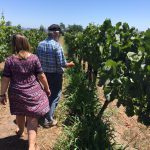
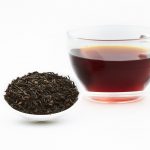


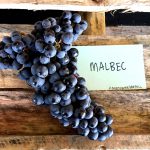
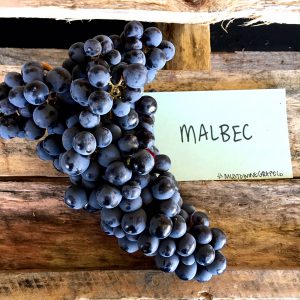

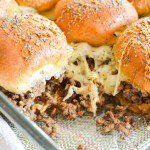

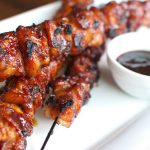

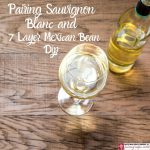
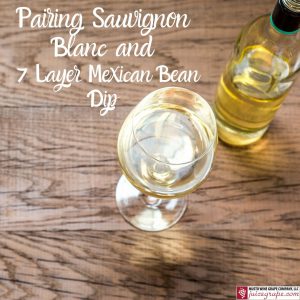
Recent Comments